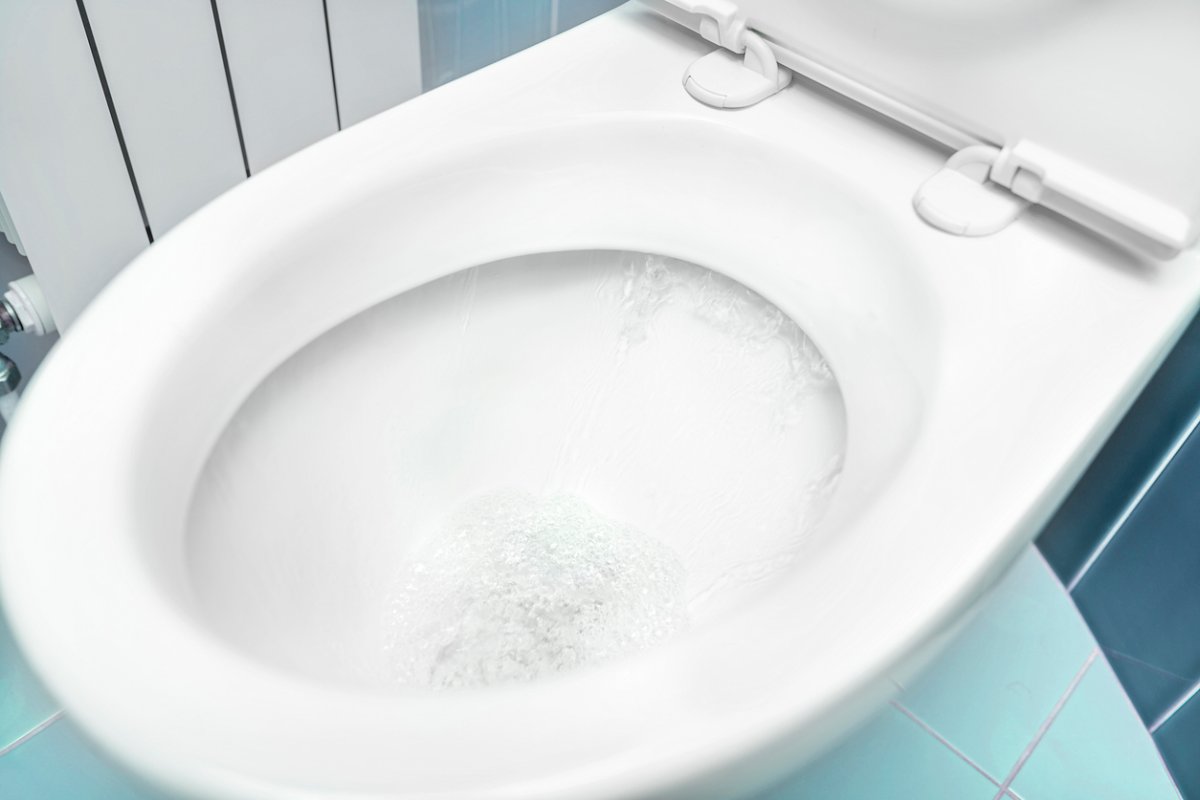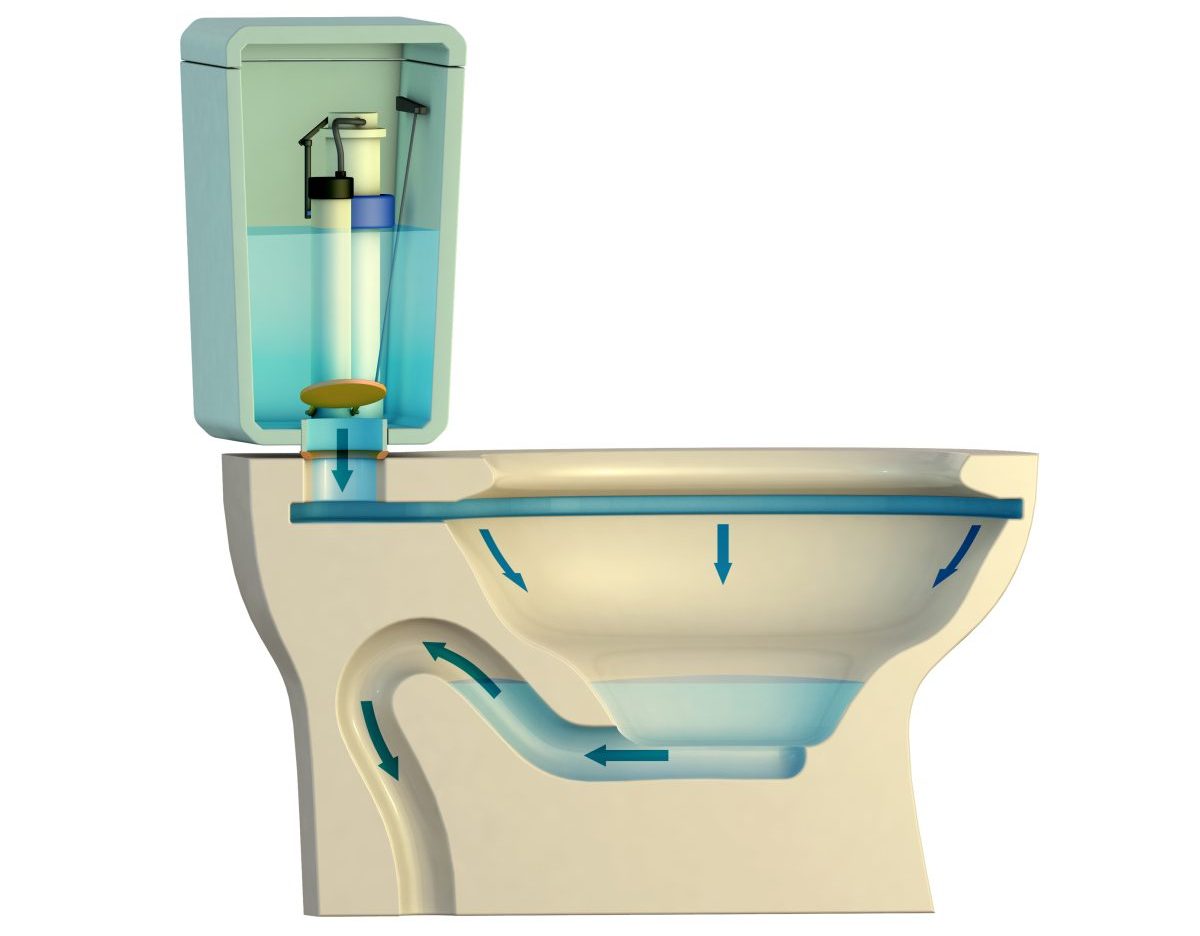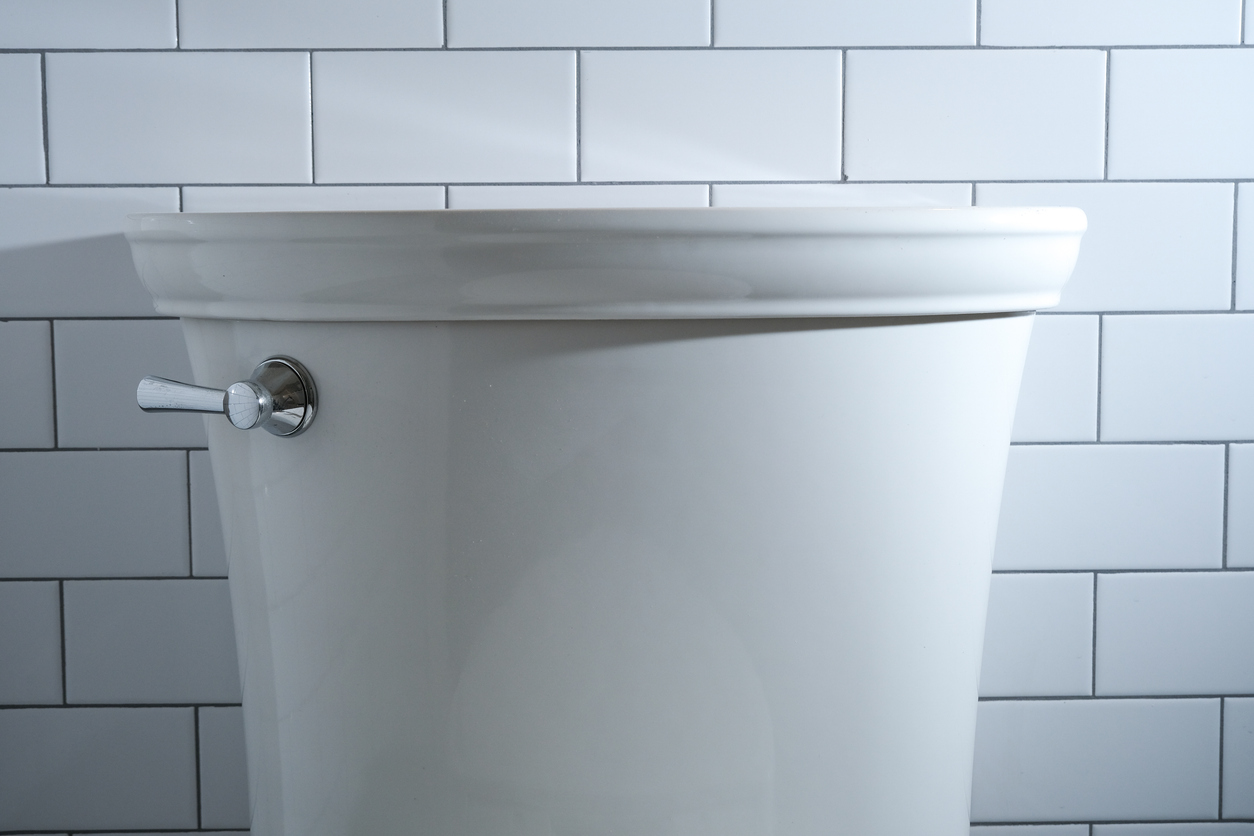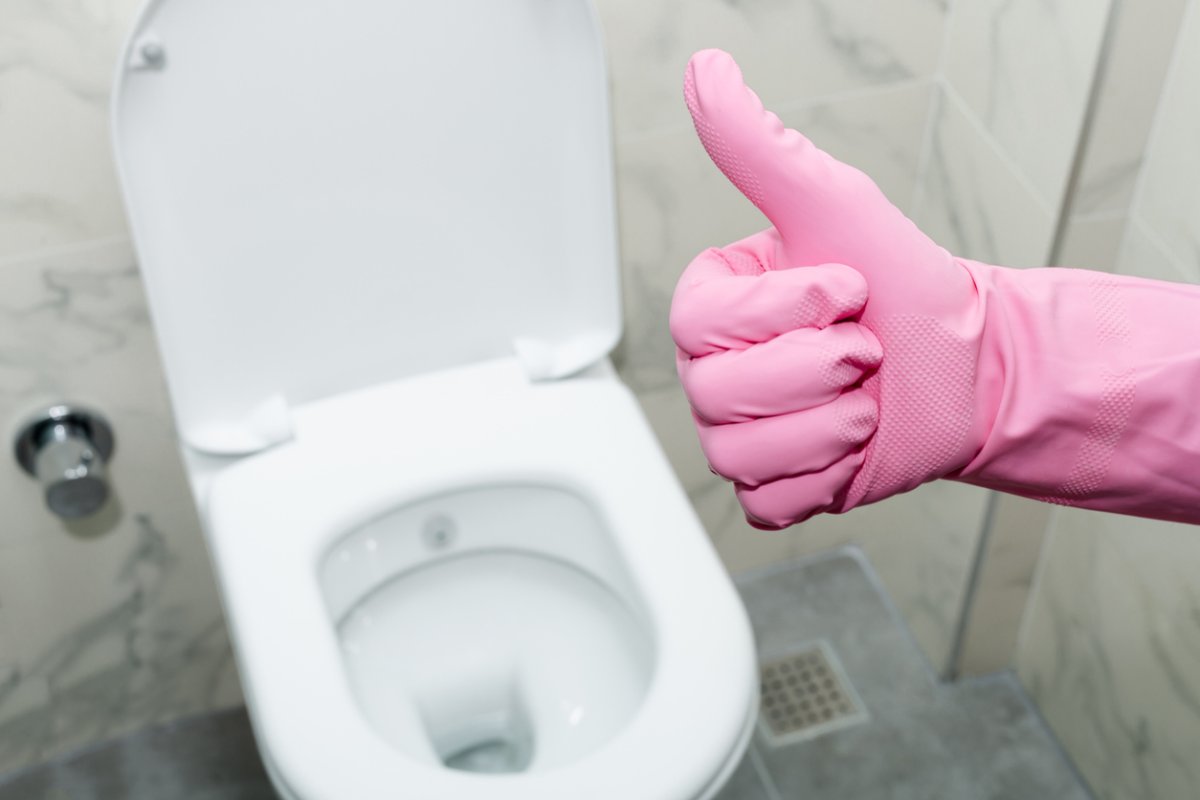

We may earn revenue from the products available on this page and participate in affiliate programs. Learn More ›
Q: A recent power outage made me realize I’m unprepared for an extended emergency. When I headed to the closest home improvement store to buy supplies, I stumbled upon emergency toilets. This prompted a question I had never considered before: Can you flush the toilet when the power is out?
A: Some important questions go unanswered until you’re sitting on the toilet in the dark without a flashlight. “Can you flush a toilet without power?” is one of them. The good news is that you can flush the toilet during a power outage if you have a standard gravity-flush toilet connected to municipal water and sewage. For anyone with a pump-assisted toilet, though, you might not be able to flush it without power—at least, not more than a few times (if at all).
Ultimately, being able to flush the toilet when the power’s out depends on the type of toilet you have, the type of water and sewer system it’s connected to, your geographic location, recent weather trends, and the duration of the power outage.
Gravity-flush toilets can be flushed during a power outage.
No matter where you live, it’s a good idea to determine whether or not you can flush the toilet when the power is out before the electricity ever goes out. Start by checking what type of toilet you have in your bathroom(s). Gravity-flush toilets have a simple system by which water enters the tank through the inlet valve, then when the toilet is flushed, a valve in the base of the tank opens, allowing all the water in the tank to flow rapidly down into the toilet bowl. This relies on the force of gravity to flush the contents of the bowl. Since this type of toilet does not rely on electricity, it can still be used during a power outage.
In the event of a water outage, on the other hand, keeping a small emergency supply of water stored in the home is essential for flushing gravity-flush toilets when the water is off. To manually flush your toilet without running water, simply pour a bucket of water into the tank, or directly into the bowl. The weight of the water flowing into the bowl will force the bowl’s contents into the drain line at the back of the toilet, allowing toilet flushing as long as you have more water to supply it with.

Pump-assisted toilets may not flush without power, however.
Toilet type has a big impact on whether a toilet can be flushed without power. While a gravity toilet relies on just the weight of the water for flushing, a pump-assisted toilet can only generate a sufficiently strong flow with its electric pump. Unfortunately, that means these pump-assisted toilets, including some smart toilets, cannot reliably be flushed in a power outage, since they rely on electricity in order to function.
However, even when a pump-assisted toilet’s electricity supply is cut off, some remaining water in the pipes might allow the toilet to be flushed a few times during a power outage before it stops working.
It’s worth preparing for an emergency scenario by turning off the power to your pump-assisted toilet to simulate a power outage, then repeatedly flushing the toilet (allowing the tank to completely refill each time) until it stops working. However many successful flushes your toilet performs in this trial run should accurately represent how many times you can flush the toilet without power. Once the tank stops filling up, the toilet will need to be flushed manually. Everyone in your household should learn how to manually flush a toilet by pouring a bucket of water directly into the toilet bowl or manually filling the toilet tank.

The local sewage system also determines whether your toilet can be flushed with no power.
Having a home that is connected to the municipal water and sewage system is beneficial during a power outage because the lack of electricity seldom affects the water supply. However, if you live in a large condo building or apartment building, there is a high chance that the unit will be without water when the power goes out, since electricity is required to run the water pumping system.
Similarly, homeowners who have a well system should learn how to flush a toilet without running water because the well pump will not be able to run during a power outage, limiting the amount of water to which residents have access. If the well system has a reservoir, there might be about 10 to 50 gallons available for household use before the water runs out, while homes without a reservoir will immediately lose access to running water until the power comes back on.
Gravity-flush toilets, pump-assisted toilets, and high-end smart toilets alike can all be flushed manually by pouring water directly into the bowl, but you still need a supply of water on hand. Those who live in homes with a well system or one that relies on a building water pump should keep an emergency supply of water to ensure they can flush solid waste during an extended power outage.
During an extended power outage, the number of times you can flush the toilet depends on a few factors.
Short-term power outages typically have a limited effect on day-to-day life, but when the power is out for days—or even weeks—at a time, it can have a significant impact. Water typically flows into the home through the municipal water main, providing an ongoing supply of water without an immediate need for electricity. However, the amount of available water is limited. Even in a large city, the plumbing infrastructure depends on pumps that run on electricity.
If a home is located in an area with abundant access to water, like a coastal city or near a large freshwater lake, then the availability of water isn’t normally an issue. However, the municipal water supply may run out quickly or be reserved for more important issues than waste disposal in areas that experience frequent droughts or wildfires, so it’s necessary to consider the local climate and weather conditions when rationing water usage.
Similarly, even the most reliable toilet won’t flush without water, so if a home has a well system, the homeowner can flush the toilet only as long as there is water in the reservoir. With typical reservoir storage of about 10 to 50 gallons of clean water, a low-flow toilet that uses about 1.28 gallons per flush, can be flushed seven to 39 times before the reservoir runs dry.

Final Thoughts
In most situations, a standard gravity-flush toilet that is connected to municipal water and sewage will still be able to flush when the power goes out. However, pump-assisted toilets will flush only a few times before needing manual filling to operate. Additionally, apartment units and condo units may lose access to running water when the power goes out because electricity is required to run the building’s water pump system. Similarly, a well pump requires electricity to send water into the home, so the number of times the toilet can be flushed on a well system is limited to the size of the water reservoir.
A home generator can help to alleviate water usage limitations during a power outage by powering a well pump, but it cannot assist with a municipal water supply or be helpful for apartment units or condos. Additionally, if the power is out for a long period during the winter, it’s a good idea to turn on a faucet to help prevent the pipes from freezing. As long as the water is running, the constant flow should reduce the risk of freezing. Electric space heaters connected to a generator can also help to keep the pipes from freezing.
